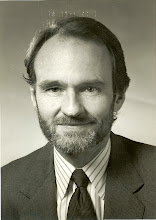The excitement behind us (Jan NFP, and the reported burst in January activity for the non-manufacturing sector), let’s decide how best to navigate the landscape just ahead.
First, a little something on crowd behavior:
Crowd dynamics apply equally well to that group of individuals known as street economists, those who through their collective estimate set market consensus, as they do to a revolutionary mob. And like any mob or crowd - holding hands together, shouting out in the dark - they are prone to act 1) in unison and 2) in the extreme.
In times of uncertainty, opinions are drawn together. Past years we have observed that the greater the uncertainty the greater the similarity of predictions. This births vulnerability. That vulnerability or flaw as we prefer the term has been the near-consistent underestimation of real sector activity, past many weeks. Because of the buoyant Jan payroll print and the leading characteristics attributed to the release, that vulnerability has now reversed, at least for the near term. All over Wall Street, old models litter the gutter. The market crowd was set up Q4, early Q1 to look for less than was there; they got rolled. Now the market crowd, at least for the near term, may be set up to look for more than is there.
We have a very shallow US release stream this week. Only Claims Feb/9 may provide an illustration. Analysts don’t want to be flattened again, so as a group they will error to the side of less, not more on Claims. We don’t think this example will illicit much reaction, but clients no doubt understand our point. And it may better apply to the many key releases of the week of Feb/13.
And how does this translate to the bottom line? How might traders posture over the near term? Since we know that the US economy will continue to gain momentum over the intermediate term (short of wild card events) the trick then is to latch onto those bouts of “disappointment,” if and when, as windows to set trades by the way of FI, FX or equity. That is because these events will not represent trend.
We prefer spreads but to each his own. Look to own the curve if not already long. Look to place option bear spreads on the note. Look perhaps at the equity sector too if that decision is based on macro considerations. Look at the Euro calendar spreads, which have move very little naturally as the market takes the Fed’s target as gospel.
But most importantly, do not, past day trading perhaps, set any trade based on intermediate to longer term US weakness, either in isolation or vs the E-Z for example. There will be the temptation. Recall the “burst” in payrolls the spring of 2011, then the fade. Many will prepare for a repeat, doubting sustainability. That period in 2011 however was accompanied by shocks of various sorts, primary among these – Arab Spring and the impact on gasoline, and, misdirected Fed policy and the impact on commodity prices. And of course there will always be shocks, wild card events; Iran comes to mind. Aside from such an event, the US economy will continue to gain momentum.
Robert Craven

No comments:
Post a Comment